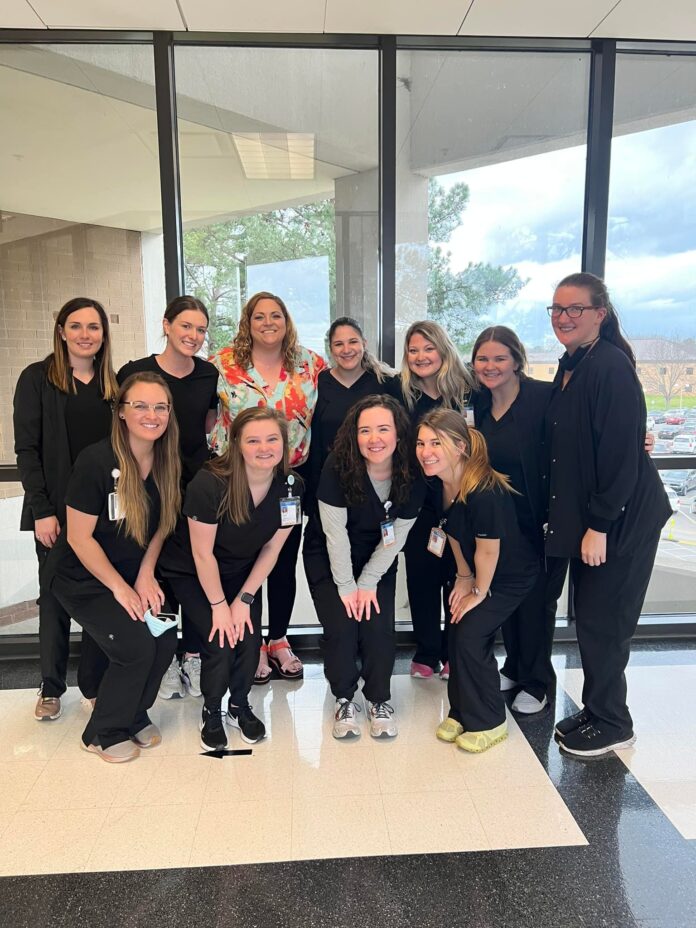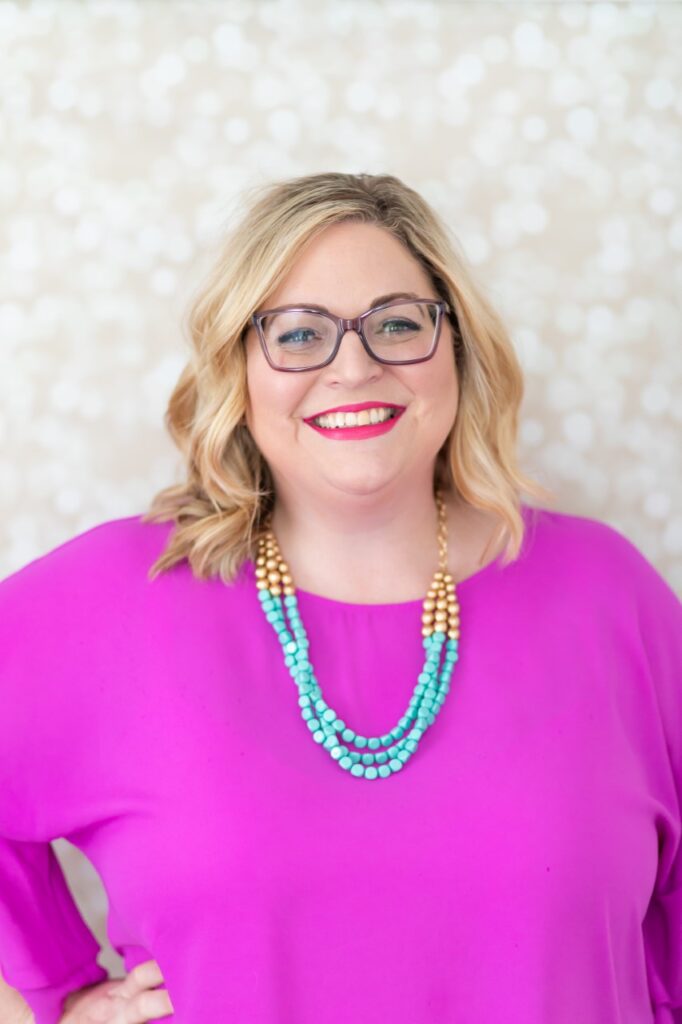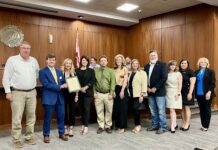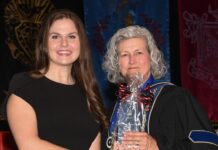
HANCEVILLE, Ala. – Laura Smith is an occupational therapist who teaches the Occupational Therapy Assistant Program at Wallace State. For Occupational Therapy Month, she explained the overlooked details of the career and shared the many ways occupational therapy helps clients. When talking about a mixed group of Occupational Therapists (OT) and Occupational Therapy Assistants (OTA), occupational therapy practitioners are called OTPs. Smith says, “I’m hoping the term OTPs will catch on, because otherwise, that’s a mouth full!”
The official definition from the national organization, the American Occupational Therapy Association (AOTA) is: “Occupational therapy is the only profession that helps people across the lifespan to do the things they want and need to do through the therapeutic use of daily activities (occupations). Occupational therapy practitioners enable people of all ages to live life to its fullest by helping them promote health, and prevent—or live better with—injury, illness or disability.”
Smith shared, “We teach our students at Wallace State to develop their own ‘elevator speech’ to be able to talk concisely and specifically about the distinct value of OT. My own elevator speech has evolved the longer I’ve been in the field. I highlight the word ‘occupation’ and dispel the myths that I am there to help someone get a job. I discuss how that term means activities that occupy your time.”
Smith highlighted the nine areas of occupation that have been defined by AOTA as a way of explaining exactly what OTPs do:
ADL stands for Activities of Daily Living- These are the basic motions people do every day such as going to the bathroom, showering, getting dressed, feeding yourself, etc.
IADL stands for Instrumental Activities of Daily Living- These are the higher-level daily tasks like cleaning the house, childcare or caregiving for a family member, taking care of pets, gardening, budgeting, shopping, community mobility and driving.
Health Management– This is management of health conditions including medication management, making appointments for care, managing equipment to support health (diabetics checking their insulin), managing mental health.
Sleep and Rest– The routines that surround sleep and rest.
Play– A kid’s main occupation. This includes all the aspects that go into play, including the physical and social aspects of playing with others, cognitive aspects including the use of imagination, etc.
Leisure– These are activities that people don’t have to do but want to do to occupy their time. These could be indoor pursuits, reading, sewing, watching TV or outdoor hiking, sports etc.
Work– The physical, mental, and cognitive aspects that go into finding a job and doing that job well.
Education– Many components go into education-physical, mental and cognitive aspects.
Social Participation– This could be anything that a person participates in socially- book clubs, church, bingo groups, etc.
OTPs help to treat any reason that a person might not be able to participate in any of these key areas. That could be a physical or mental reason resulting from a developmental delay, an injury, an illness (chronic or acute) or even a period of mental unhealthiness. The ailment causes a disruption in those occupations and OTPs try to restore function and independence in the things that are purposeful and meaningful to that person.
Smith discussed the various settings in which OTPs work and the wide array of ailments they treat, saying, “OT practitioners can work in traditional areas such as hospitals in acute care and inpatient rehab, skilled nursing facilities, home health, school systems, outpatient clinics, pediatrics and mental health facilities. Non-traditionally or emerging areas of practice include working in prison systems, homeless shelters, Alzheimer’s day programs, as driving specialists and much more. Specific diagnoses could be anything from Down Syndrome, cerebral palsy, autism, sensory processing disorder, congestive heart failure, COPD, strokes, fractures, depression, bipolar, schizophrenia and the list goes on.”
Why is it necessary that OT is its own field vs PT?
“OT and PT go together like peanut butter and jelly, but we are two distinct fields! I love my PT friends, but we work on different complimentary things. I used this example a lot when I was working in home health. My PT friends would help the patient get where they were trying to go. They did this by working on their gait, their balance, strengthening their legs, progressing their device to assist with walking, etc. I worked on what they wanted to do when they got there. Was it to use the bathroom? Was it to the closet to put on their clothes? Did they want to cook a meal for their family? Did they want to go outside and check on their garden? Did they want to play with their grandkids? Did they want to get back to a book club? Did they struggle to know what to do with their time now that they are retired? Those are occupations and that’s why OT is important!”
Are there areas in which you think OTs should have more recognition?
“Yes, I think OT practitioners should have more recognition because of all the factors we look at when working with a person. We are a very holistic practice and take into consideration a person’s motivations, physical and mental abilities, habits, roles and routines to help develop their plans for intervention.”
How do you help patients who get angry or frustrated?
“I think we learn to look behind the anger and frustration to see what is causing it. We also utilize a phrase in OT called the ‘just-right challenge.’ We are always trying to adjust the intervention for the patient to meet their needs. It’s not too hard but it is hard enough to help them grow. Sometimes, the activity needs to be adjusted to lower frustration. I also have always tried to pick interventions that the patient was motivated to participate in, and therefore, they have more buy-in. We really stress this point with our Occupational Therapy Assistant Students.”
Smith stated that the past few years of her home health career was based on helping patients with chronic illnesses. “Through that lens, you don’t define ‘success’ as recovery, but management or lack of decline. My role was to help empower them to live a more full life by helping them take control of their health management. I would recommend home modifications, adaptive equipment and technology to support independence as their abilities decreased, and just tried to help problem-solve whatever issue came up.”
Applications for the next Wallace State Occupational Therapy Assistant cohort that begins in fall 2022 are currently open and will close on June 1. To view the Wallace State Occupational Therapy Assistant Facebook page or Instagram go to https://www.facebook.com/wallacestateOTA and @wsccota.

Copyright 2021 Humble Roots, LLC. All Rights Reserved.



























